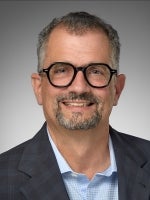A divided Federal Circuit, in a precedential opinion, upheld a lower court’s finding that the claims of US Patent No. 7,774,911 ineligible for patenting under Section 101 because the claims are directed to a law of nature. The ‘911 patent claims relate to methods of manufacturing vehicle driveshaft assemblies.
Deciding the question on summary judgment, the district court treated independent claims 1 and 22 of the ’911 patent as representative. Claim 1 recites:
A method for manufacturing a shaft assembly of a driveline system, the driveline system further including a first driveline component and a second driveline component, the shaft assembly being adapted to transmit torque between the first driveline component and the second driveline component, the method comprising:
providing a hollow shaft member;
tuning at least one liner to attenuate at least two types of vibration transmitted through the shaft member; and
positioning the at least one liner within the shaft member such that the at least one liner is configured to damp shell mode vibrations in the shaft member by an amount that is greater than or equal to about 2%, and the at least one liner is also configured to damp bending mode vibrations in the shaft member, the at least one liner being tuned to within about ±20% of a bending mode natural frequency of the shaft assembly as installed in the driveline system.
Followers of Section 101 are aware it provides that “any new and useful process, machine, manufacture, or composition of matter, or any new and useful improvement thereof” may be eligible to obtain a patent. 35 U.S.C. § 101. You are also aware that the Supreme Court has long recognized that an implicit exception to this broad statement of patent eligibility includes Laws of nature, natural phenomena, and abstract ideas. See, e.g., Ass’n for Molecular Pathology v. Myriad Genetics, Inc., 569 U.S. 576, 589 (2013) (brackets omitted) (quoting Mayo Collaborative Servs. v. Prometheus Labs., Inc., 566 U.S. 66, 70 (2012))).
Analogizing the claims to those reviewed by the Supreme Court in Parker v. Flook,[1] the majority here found that the “claims of the ’911 patent are directed to the utilization of a natural law” (Hooke’s law), and “do not disclose how target frequencies are determined or how … liners are tuned to attenuate two different vibration modes simultaneously.” In other words, the majority found that the claims simply instruct the reader to tune a liner and that this is nothing more than an application of a law of nature “without the benefit of instructions on how to do so.”
The majority dismissed the patentee’s assertions that the system involved in the ’911 patent is more complex than just a bare application of a law of nature because the claims are lacking “any physical structure or steps for achieving the claimed result of damping two different types of vibrations.” Judge Dyk, who was joined by Judge Richard Taranto in the majority, noted that while the patentee may have discovered patentable refinements relating to the claimed process, specifics of such novel refinements are not disclosed in the patents, much less included in the claims themselves, and “unclaimed features cannot function to remove claims 1 and 22 from the realm of ineligible subject matter.”
Turning to step 2 of the Mayo/Alice framework, the majority further found that the claims don’t provide an “inventive concept” that would transform them into patent-eligible subject matter. The court focused in part on the patentee’s admissions that testing for and damping natural frequencies was well known in the industry, and that the patent specification notes it was well known to position dampers to maximize vibration damping.
Judge Moore, dissenting from the majority, referred to the majority’s analysis as “validity goulash” in which Section 101 subsumes paragraph one of Section 112 (enablement), and traditional questions of fact like undue experimentation are treated as legal questions.
[1] In Flook, the Supreme Court determined that a method for updating alarm limits during a catalytic conversion processes was not a patent-eligible because the claims did not provide “an inventive application of the principle.” Parker v. Flook, 437 U.S. 584, 593-594 (1978);



 />i
/>i
